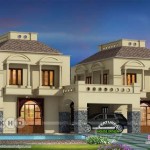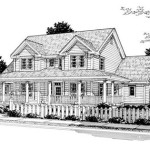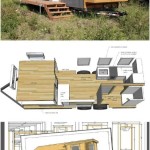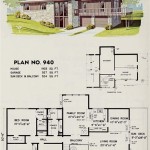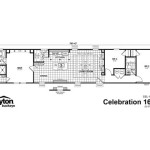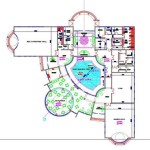Home Plan Layout Ideas: Maximizing Space and Functionality
Designing a home involves careful consideration of various factors, with the layout being paramount. A well-designed home plan layout optimizes space utilization, enhances functionality, and contributes significantly to the overall living experience. Effective home plan layout ideas consider the needs and lifestyle of the occupants, ensuring a comfortable and efficient living environment.
The foundational step in planning a home layout involves understanding the site and its constraints. Topography, orientation, zoning regulations, and existing utilities all play a crucial role in determining the feasibility and orientation of the home. A thorough site analysis informs the initial design concepts and helps avoid costly revisions later in the construction process. Understanding the site's natural features, such as sunlight exposure and prevailing winds, allows for passive design strategies that can enhance energy efficiency and comfort.
Open-Concept Living: Blurring Boundaries and Enhancing Flow
Open-concept living has become increasingly popular due to its ability to create a spacious and modern feel. This layout typically combines the kitchen, dining area, and living room into one contiguous space, fostering a sense of connection and facilitating social interaction. The absence of dividing walls enhances natural light penetration and creates a more expansive visual experience.
Open-concept layouts are particularly well-suited for families with young children, as they allow parents to monitor activities in multiple areas simultaneously. They are also ideal for entertaining, providing ample space for guests to mingle and interact. However, open-concept designs require careful consideration of acoustics and zoning to prevent noise and visual clutter from overwhelming the space. Strategically placed furniture, rugs, and architectural elements can help define individual zones within the larger open area.
A key consideration in open-concept design is the kitchen layout. Islands and peninsulas are often incorporated to provide additional counter space, seating, and storage. They also serve as visual dividers, separating the kitchen from the living and dining areas without completely isolating it. Proper ventilation is crucial in open-concept kitchens to prevent cooking odors from permeating the entire living space. High-quality range hoods and strategic window placement can help mitigate this issue.
Furthermore, the flow of traffic within an open-concept space must be carefully planned. Clear pathways should be established to prevent bottlenecks and ensure easy movement between different areas. Furniture placement should be deliberate and avoid obstructing these pathways. Thoughtful consideration of lighting design is also crucial, with layered lighting schemes providing both ambient and task lighting to enhance functionality and create a welcoming atmosphere.
Zoned Living: Creating Distinct Functional Areas
Zoned living involves dividing the home into distinct functional areas based on their purpose and use. This approach allows for greater privacy and noise control, making it well-suited for families with diverse needs and lifestyles. Typical zones include a sleeping zone (bedrooms and bathrooms), a living zone (living room, family room), a working zone (home office), and a service zone (kitchen, laundry room, utility areas).
Strategic zoning involves placing similar-use rooms in close proximity to each other. For example, clustering bedrooms and bathrooms together creates a private sleeping zone that is separate from the more active living areas. Similarly, locating the kitchen and dining area near each other facilitates efficient meal preparation and serving. The placement of the home office should be carefully considered, with options including a quiet corner of the house or a separate detached structure, depending on the occupant's work style and privacy requirements.
Transition spaces, such as hallways and foyers, play an important role in connecting different zones within the home. These spaces should be well-lit and visually appealing, creating a smooth and inviting transition between different areas. The design of transition spaces should also consider functionality, such as providing storage for coats and shoes in the foyer or incorporating a gallery wall in a hallway.
Acoustic considerations are particularly important in zoned living, especially when separating noisy areas from quiet areas. Soundproofing materials, such as insulated walls and solid-core doors, can help minimize noise transmission between different zones. Strategic use of rugs and soft furnishings can also help absorb sound and reduce reverberation. The placement of appliances, such as washing machines and dishwashers, should be carefully considered to minimize noise pollution in adjacent living areas.
Flexible Spaces: Adapting to Changing Needs
Flexible spaces are designed to be adaptable and multi-functional, allowing them to accommodate a variety of activities and needs. This approach is particularly valuable in smaller homes or for individuals and families who value versatility and adaptability. Flexible spaces can serve as guest rooms, home offices, playrooms, or hobby rooms, depending on the occupant's needs at any given time.
Designing flexible spaces involves incorporating features that allow for easy reconfiguration and multi-functional use. Fold-away beds, modular furniture, and built-in storage solutions are all effective strategies for maximizing space and functionality. Room dividers, such as sliding doors or curtains, can be used to create temporary partitions, allowing a single room to be divided into multiple smaller spaces as needed.
Lighting design is crucial in flexible spaces, with layered lighting schemes providing both ambient and task lighting for different activities. Dimmable lights allow for adjustment of the light level to suit the specific task being performed. Strategic placement of outlets and data ports is also essential to accommodate a variety of electronic devices and equipment.
Storage is a key consideration in flexible spaces. Built-in shelving, cabinets, and drawers can provide ample storage for a variety of items, keeping the space organized and clutter-free. Utilizing vertical space is particularly important in smaller homes, with floor-to-ceiling shelving and storage solutions maximizing storage capacity. Thoughtful planning of storage spaces can significantly enhance the functionality and versatility of a flexible space.
The trend of remote work has further emphasized the importance of flexible spaces. With more individuals working from home, the need for dedicated home offices has increased. However, not everyone has the space for a dedicated office. Flexible spaces can provide a practical solution, allowing a spare room or even a corner of a living room to be transformed into a functional workspace. Ergonomic furniture, proper lighting, and adequate storage are essential elements in creating a comfortable and productive home office environment.
Creating a successful home plan layout requires a holistic approach that considers the needs and lifestyle of the occupants, the characteristics of the site, and the principles of good design. By carefully considering the factors outlined above, it is possible to create a home that is both functional and aesthetically pleasing, enhancing the overall living experience.
In addition to these key points, several other factors can influence the design of a home plan layout. These include budget constraints, building codes, accessibility considerations, and personal preferences. A collaborative approach involving the homeowner, architect, and builder is essential to ensure that the final design meets the client's needs and expectations.

Floor Plans Types Symbols Examples

Design Your Own House Floor Plans Roomsketcher

Small House Design 2024001 Pinoy Eplans Floor Plans

Design Your Own House Floor Plans Roomsketcher

41 Elegant Home Plan Design Ideas Engineering Discoveries House Plans Little Building

House Floor Plans Your Best Guide To Home Layout Ideas Decorilla Interior Design

Design Your Own House Floor Plans Roomsketcher

Small House Design Shd 2024007 Pinoy Eplans One Y Bungalow Plans Floor

Floor Plans Types Symbols Examples

Small House Plans Popular Designs Layouts


